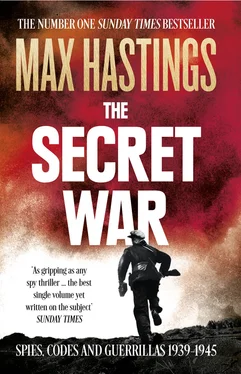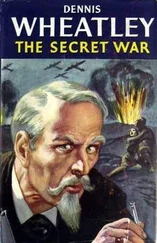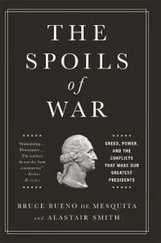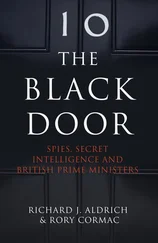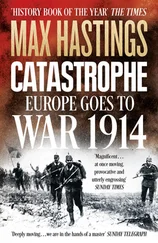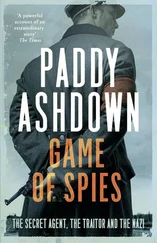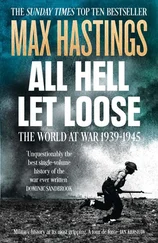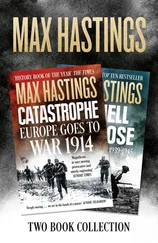The British officers privy to the Ultra secret knew that they were custodians of one of their country’s most precious assets, which would become instantly forfeit if any hint of their growing successes reached Berlin. American security was poor, as might be expected of a people not yet committed to the struggle, who were anyway constitutionally ill-suited to keeping secrets. British intelligence chiefs were eager for American goodwill, but doubtful how much of practical value their US counterparts could tell them. Pending evidence that a two-way traffic could benefit their embattled island, they determined to give away as little as possible. Moreover, as an anguished Whitehall hand scribbled during the 1941 debate about how much to tell a visiting US delegation: ‘What will they think if they find we have been reading their own stuff?’ – a mild embarrassment about which Churchill came clean to Roosevelt on 25 February 1942, with the assurance that decryption of US material had stopped immediately after Pearl Harbor.
The sparse 1940–41 meetings and exchanges between the two nation’s codebreakers and intelligence officers took place in a climate of mutual wariness, and it was the Americans who displayed greater frankness. On 31 August 1940 the British were told that the Signals Intelligence Service had broken the Japanese Purple key. This revelation prompted no immediate invitation to Bletchley: when the Tizard mission visited the US in September to show off such revolutionary technology as the cavity magnetron – a tempting morsel, key to new-age tactical radar, and intended to promote American reciprocity – information about Ultra was explicitly excluded. On the American side, Laurance Safford of the US Navy’s Op-20-G codebreaking team was likewise opposed to sharing its secrets with the British. In December 1940 the two nations reached an agreement to pool information about codebreaking, but both were slow to bring this into effect. Only on Japanese material was there immediate close collaboration: in February 1941 the British cryptanalysis team in Singapore and its American counterpart in the Philippines exchanged liaison officers, who discovered that both were in about the same place with Tokyo’s codes. In the early war years the British did better than the Americans in monitoring some low-level Japanese armed forces traffic, though they failed to break into their higher ciphers. Nonetheless, when British forces in 1941 requested urgent American assistance in securing high-altitude photographs of Japan’s naval bases, Washington vetoed the proposal.
At the height of the Luftwaffe Blitz on Britain two FBI agents, Hugh Clegg and Clarence Hince, visited London to study ‘law enforcement in time of war’. Guy Liddell of MI5 thought that while the visitors looked somewhat thuggish, Clegg seemed ‘a very good fellow’. Such warmth was not reciprocated. On their return, the two men delivered to Hoover a report depicting the British, explicitly MI5 and the Metropolitan Police, in terms of withering scorn. They complained that it was difficult to arrange meetings before 10 a.m. or after 4 p.m. because ‘the transport situation is very difficult, you know’. They said that ‘The fact “exploratory luncheons” were usually two hours in length made our working day rather limited, particularly when compared to the customary hours that officials of the FBI are engaged in official business.’ They concluded that the British ‘might win the war if they find it convenient’. This report set the tone for the FBI’s view of the British for decades thereafter.
In January 1941, when an American codebreaking team – two army, two navy – paid a pioneering visit to Britain, they brought with them a remarkably generous gift: a mimicked Purple machine, of which a second copy was handed over later. The British, however, reciprocated cautiously. With Winston Churchill’s explicit sanction they admitted the visitors to Bletchley, and explained the Hut system. They revealed the bombes, GC&CS’s most critical innovation, but thereafter prevaricated about fulfilling American requests to be given an example of what Washington described as ‘a cypher-solving machine’. There were very good reasons for this – the US was not in the war, and the bombes were scarce pearls. The Americans recognised that they had seen in action a system way ahead of anything the US armed forces were doing. Alfred McCormack, who became the secretary for war’s special assistant on comint, said later of Bletchley: ‘It’s not good – it’s superb.’
Some people in Washington, however, were irked by apparent British pusillanimity. They themselves made little serious headway in reading Enigma traffic until floodgates opened in 1943, and – in the words of an exasperated British officer – ‘showed no appreciation of the extent of the problems facing Bletchley Park and Britain’. The Park’s Washington representative, Captain Edward Hastings, reported in November 1941 that ‘there is grave unrest and dissatisfaction about free exchange of special intelligence’. Some Americans were doggedly convinced that the British were holding out on them. As late as December 1942, when Alan Turing visited the US, he was denied admission to the Bell Laboratories in revenge for alleged British foot-dragging about collaboration, and was finally allowed inside only after a huge and protracted transatlantic row. Although William Friedman later forged warm personal relations with BP’s senior personnel, he himself made his first visit to Britain only in May 1943, about the time a formal and indeed historic intelligence-sharing pact was agreed between the two nations. Meanwhile collaboration remained wary and incomplete. Even after Pearl Harbor, Bletchley and its owners remained fearful not only about American security shortcomings, but also about the danger that this brightest jewel in the imperial crown might somehow be snatched from them by the boundlessly rich, irresistibly dominant new partner in the Grand Alliance. Alastair Denniston wrote that for Britain Ultra was ‘almost lifeblood’, whereas the Americans seemed to view Enigma, with the detachment of distance and freedom from mortal peril, merely as ‘a new and very interesting problem’.
The War Office’s deputy director of military intelligence wrote on 17 February 1942, ten weeks after Pearl Harbor, that in talking to the Americans, ‘the general policy is to be as frank as possible but no information will be given regarding our own future operations, or sources of information, nor will any information be passed which emanates from special most secret sources [Ultra]’. On 16 March the cabinet secretary Sir Edward Bridges wrote a memorandum warning that telephone conversations between London and Washington ‘still reveal instances of gross [American] lack of discretion’. Stewart Menzies and his officers at MI6 remained reluctant to open their hearts and files to their new brothers-in-arms.
Unfortunately, the British obfuscation which persisted through much of 1942 prompted misunderstandings and mounting anger among some Americans. These crystallised around a belief – entirely mistaken – that Bletchley had broken into the U-boat Shark key, but was refusing to tell the US Navy about it. Op-20-G’s eventual exasperated riposte to Bletchley’s unwillingness to surrender a bombe was to announce in September 1942 – and to begin to fulfil in August the following year – its own commitment to build four-rotor models by the hundred. This was a time when the British had just thirty-two. The American machines proved technically superior to the British models, and also more reliable: in October 1943 thirty-nine were operational and by December seventy-five, though by the time these became operational much of their capacity proved superfluous to US Navy needs.
In the early war years, British intelligence collaboration with the US was cautious; only from 1943 onwards did it become wholehearted. As with so much else about Anglo–American relations, however, it is less surprising that there was so much squabbling at the outset, in the years of Allied defeat, than that the partnership eventually achieved the intimacy that it did, in the years of victory.
Читать дальше
